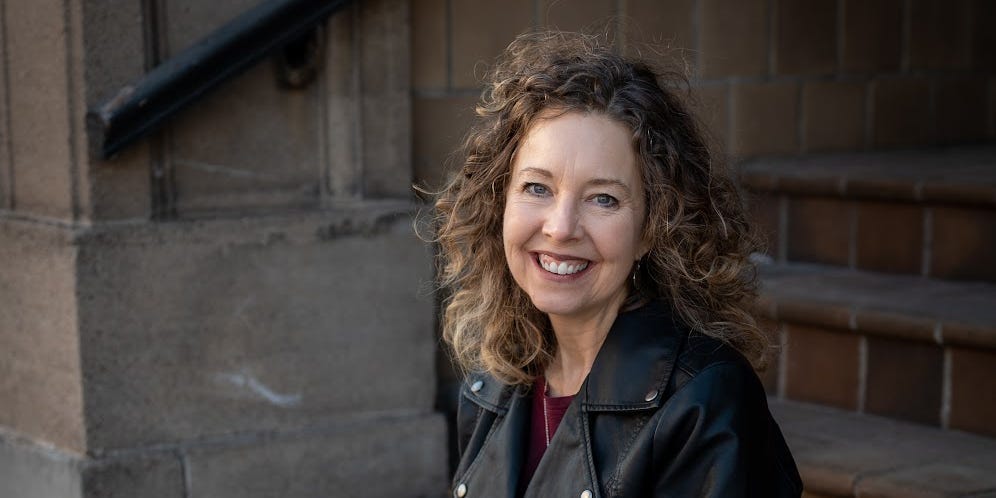- At 50, Jennie Young started using several dating apps and felt that they were all toxic.
- The Burned Haystack Dating Method began as an academic project and now has a Facebook group with over 128,000 members.
- Young, a college professor, has advice for the companies behind dating apps.
Jennie Young is a professor of rhetoric and women/gender studies at the University of Wisconsin-Green Bay. In February 2023, she started a Facebook group for the Burned Haystack Dating Method.
I thought I knew what to expect when I downloaded my first dating app. I was 50, had been divorced for 10 years, and had just gotten out of a long-term relationship. As someone who’s generally tuned in to pop culture and social media, I thought I was prepared for what I would encounter. And, in some ways, I was.
What I wasn’t prepared for was the size or extent of the problem women were facing while looking for love online.
There weren’t just a few men acting badly whom I could quickly dispatch. It was the magnitude of the toxicity. There were a lot of bad actors, and the behavior wasn’t just annoying; it was deeply problematic. It seemed that swiping left didn’t make a difference; they’d just show up in my matches again a few days later.
My frustration wasn’t unique. Articles from 2024 alone included: “It’s Not You: Dating Apps are Getting Worse” in The New York Times; “America is Sick of Swiping: Dating Apps are Falling Back to Earth” in The Atlantic; and “Why Gen Z is Ditching Dating Apps” in Time.
I went from Match to Bumble to Tinder to Hinge and encountered the same problems ad infinitum. I felt frustrated and quickly realized it was not just me.
I developed my own method
After a few months, I decided to make it an academic project. I’m a professor of rhetoric and women/gender studies at the University of Wisconsin-Green Bay.
An understanding of rhetoric allows me to quickly parse text and read between the lines to determine what people are revealing without intending to, and a solid grounding in feminism helps me recognize the sometimes subtle flags of sexism and aggression that women encounter frequently on dating apps.
The project evolved into a new dating method that I named the Burned Haystack Dating Method. My method encourages daters to filter out time wasters and red flags as soon as possible.
As of November 13, there were over 128,000 women/nonbinary people in my private Facebook group and 60,000 followers on Instagram.
I chose to share the method on social media because it’s free. Accessibility was important to me from the beginning; I didn’t want to monetize the information by keeping it behind a paywall, and I didn’t want to charge women for consultation or “coaching.”
A little over a year and a half after creating the method and developing a following, I’ve learned a few things that I feel would keep daters happier with the apps.
Women feel like their preferences are being ignored
Here is a typical scenario I’ve experienced, and that has been repeated to me on several occasions by women who have spent time online dating: A woman is excited to set up her new dating app profile. She carefully selects her prompts, writes thoughtful responses, and curates her pictures. She sets boundaries around things like age, geography, marital status, political orientation, and lifestyle factors.
To me and many of those I’ve spoken to, the apps appear to honor almost none of this.
A woman told me she had specified that she was looking for a 40-to-45-year-old politically liberal nonsmoker within 50 miles of her home. This didn’t stop the app she was using from showing her a full line-up of 60-year-old chain smokers from three hours away. So she swiped left, but the next matches were even worse, and eventually, the same men she swiped left on originally reappeared.
Other women have mentioned reporting toxic behavior directly to dating apps.
Dating app companies are not responsible for fixing the users, nor is that even possible, but there are things I feel they could do better Here are three ideas.
- Listen to users: Honor the boundaries articulated. If someone swipes left, don’t show the same person to them again. If you don’t have anyone who meets the said criteria, then simply say that. Leave it up to the individual whether they want to expand their filters or just wait. They’re all adults.
- Do a better job of screening: AI tools can now screen for tone problems such as aggression.
- Get the bad actors out: When reports are made regarding toxicity, aggression, and deceit — even if it just means lying about age or marital status — verify and remove the offenders. Users also need to be more vigilant about reporting bad behavior to the apps, as many of the companies will take the necessary steps to remove the profile.
These changes won’t solve the larger cultural problems women face in the dating market, but implementing them could improve the dating app experience while we continue to address the problems in society.
But while it would improve things for daters, it’s not likely it would improve things financially for the apps. Last month, Albert Fox Cahn, a journalist, wrote in BI that the apps face a problem when it comes to the popularity contest.
“It turns out dating apps face a unique barrier to success: The more effective your app is, the less profitable it becomes. People pay to find a partner, and once you find one, the app loses your business,” Cahn wrote.
In the end, it looks like dating apps and singles face a conflicting definition of success.
A representative from Match Group., the parent company of Tinder and Hinge, told BI they have made investments to improve both their automated and manual moderation and review tools.
“These tools include automatic scans of profiles for red-flag language and images, manual reviews of suspicious profiles, activity, and user generated reports, as well as blocking email addresses, phone numbers and other identifiers,” a Match Group. respresentive said.
The representative said the company spends $125 million a year on the “trust and safety teams, technology, partnerships, and initiatives and is focused on improving safety across the Match Group portfolio.”
According to Bumble, the app matches people who have mutually swiped on each other. The platform is set up so that women make the first move, and they can reply within 24 hours, or the match expires.
Bumble said that anyone who experiences harassment is encouraged to use the app’s “Block and Report” system. Bumble also said the app is using automated and AI-based technology to identify potential violations before members even report them.


